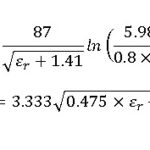5G’s enhanced mobile broadband brings faster download and upload speeds, enabling seamless 4K video streaming, virtual reality experiences, and cloud gaming. It uses in smart cities, IoT applications, and telemedicine, facilitating real-time data transfer and remote healthcare. 5G’s low latency supports autonomous vehicles and enhances mobile hotspots while also serving as a viable alternative to traditional wired broadband through Fixed Wireless Access (FWA). These capabilities have the potential to revolutionize various industries and improve user experiences across the board.
What is 5G enhanced mobile broadband use cases?
Here are some detailed 5G enhanced mobile broadband use cases:
- Faster Download and Upload Speeds: One of the most significant advantages of 5G is its faster data transfer speeds. It can deliver download speeds of up to 10 Gbps and upload speeds of up to 1 Gbps. This enables users to download large files, stream high-definition videos, and upload content much quicker than with previous generations of mobile networks.
- Ultra High-Definition (UHD) and 4K Video Streaming: With 5G, streaming high-quality video content becomes seamless. Users can enjoy UHD and 4K video streaming on their mobile devices without buffering or quality degradation. This is crucial for video-on-demand services and live streaming.
- Virtual Reality (VR) and Augmented Reality (AR): 5G’s low latency and high bandwidth are perfect for VR and AR applications. It enables immersive experiences such as VR gaming, virtual tours, and AR applications for navigation, education, and entertainment.
- Gaming: 5G enables cloud gaming services that allow users to play graphics-intensive games on their mobile devices without the need for powerful hardware. This is achieved by offloading most of the processing to cloud servers, made possible by 5G’s low latency and high speeds.
- Smart Cities: 5G plays a crucial role in the development of smart cities. It supports real-time data collection, traffic management, and IoT (Internet of Things) devices. This can lead to reduced traffic congestion, improved energy efficiency, and enhanced public safety.
- IoT and Industrial Applications: 5G provides connectivity for a massive number of IoT devices. This is particularly valuable in industries like manufacturing, where machines and sensors can communicate in real-time, leading to improved efficiency and predictive maintenance.
- Telemedicine: 5G facilitates telemedicine by offering reliable and high-quality video conferencing. Healthcare providers can remotely diagnose patients, monitor vital signs, and provide medical consultations without the need for physical presence.
- Autonomous Vehicles: 5G’s low latency is crucial for autonomous vehicles. It allows for near-instant communication between vehicles and infrastructure, enhancing safety and enabling features like autonomous driving and vehicle-to-everything (V2X) communication.
- Enhanced Mobile Hotspots: 5G can serve as a reliable and fast mobile hotspot. This is useful for users who need internet access in areas with limited broadband infrastructure or while on the go.
- Fixed Wireless Access (FWA): 5G can be used as an alternative to traditional wired broadband services. It provides high-speed internet access to homes and businesses through wireless connections, eliminating the need for physical cables.
In summary, 5G’s enhanced mobile broadband capabilities offer faster speeds, lower latency, and increased capacity, making it suitable for a wide range of applications spanning entertainment, healthcare, transportation, and more. These use cases have the potential to revolutionize industries and improve the overall quality of life for users.
